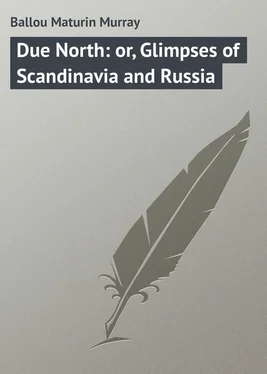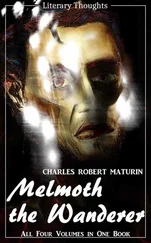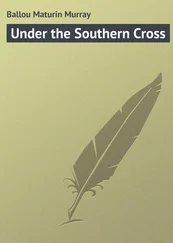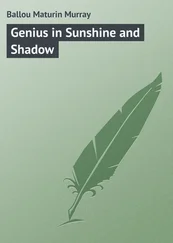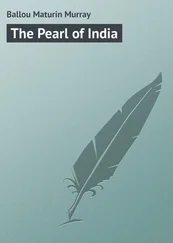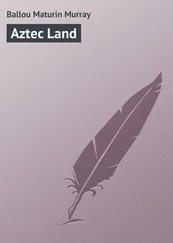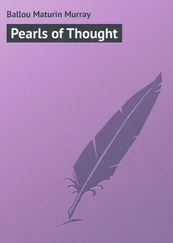Maturin Ballou - Due North - or, Glimpses of Scandinavia and Russia
Здесь есть возможность читать онлайн «Maturin Ballou - Due North - or, Glimpses of Scandinavia and Russia» — ознакомительный отрывок электронной книги совершенно бесплатно, а после прочтения отрывка купить полную версию. В некоторых случаях можно слушать аудио, скачать через торрент в формате fb2 и присутствует краткое содержание. Жанр: foreign_prose, Путешествия и география, на английском языке. Описание произведения, (предисловие) а так же отзывы посетителей доступны на портале библиотеки ЛибКат.
- Название:Due North: or, Glimpses of Scandinavia and Russia
- Автор:
- Жанр:
- Год:неизвестен
- ISBN:нет данных
- Рейтинг книги:3 / 5. Голосов: 1
-
Избранное:Добавить в избранное
- Отзывы:
-
Ваша оценка:
- 60
- 1
- 2
- 3
- 4
- 5
Due North: or, Glimpses of Scandinavia and Russia: краткое содержание, описание и аннотация
Предлагаем к чтению аннотацию, описание, краткое содержание или предисловие (зависит от того, что написал сам автор книги «Due North: or, Glimpses of Scandinavia and Russia»). Если вы не нашли необходимую информацию о книге — напишите в комментариях, мы постараемся отыскать её.
Due North: or, Glimpses of Scandinavia and Russia — читать онлайн ознакомительный отрывок
Ниже представлен текст книги, разбитый по страницам. Система сохранения места последней прочитанной страницы, позволяет с удобством читать онлайн бесплатно книгу «Due North: or, Glimpses of Scandinavia and Russia», без необходимости каждый раз заново искать на чём Вы остановились. Поставьте закладку, и сможете в любой момент перейти на страницу, на которой закончили чтение.
Интервал:
Закладка:
It is difficult to designate the order of architecture to which the Rosenborg Palace belongs, though it is clearly enough in the showy renaissance of the seventeenth century. It is attributed to the famous architect Inigo Jones. In the spacious grounds is a fine monument erected to the memory of Hans Christian Andersen, the Danish poet and author, whose popular tales are the delight not only of all Scandinavian children, but of those of larger growth, being full of acute observation and profound views under a simple and familiar guise. At the foot of this statue, as we passed by, there stood a group of young children, to whom one evidently their teacher was explaining its purport. A school of gardening is also established here, with extensive conservatories and hot-houses. These grounds are called the Kindergarten of the city, being so universally the resort of infancy and childhood during the long summer days, but are officially known as Kongen's Have (King's Garden).
Close to the Rosenborg Palace is the Astronomical Observatory, in the grounds of which is a monument to the astronomer Tycho Brahe, who died in 1610. This monument was unveiled on the 8th day of August, 1876, just three hundred years after the founding of Brahe's famous observatory on the Island of Hveen, where he discovered on the 1st of November, 1572, the Cassiopeia, which is best known as Tycho Brahe's star. "Only Venus at her brightest surpasses this new star," wrote the enthusiastic astronomer. Science, however, has since shown that it was no new star, but one that shines with great lustre for a few months once in a period of three hundred years. One sunny afternoon the author took a trip up the Sound to Hveen, familiarly known as Tycho Brahe's Island, and which was presented to Tycho by the King of Denmark. The foundation in ruins is all that remains of the famous castle which the somewhat vain astronomer built here, and to which he gave the name of Uraniborg ("Castle of the Heavens."). This man was a strange compound of science and superstition; he was a poet of no ordinary power, and was courted by many of the eminent men of his day. James VI. of Scotland was at times his guest at Hveen. He was well connected, but mortally offended his relatives by marrying an humble peasant girl of Amager.
The most interesting Christian temple in the capital is that of Our Lady's Church, being also the oldest and best endowed. It was founded early in the twelfth century, and is in the Greco-Roman style; but its greatest attraction is the possession of some of Thorwaldsen's finest sculpture. The sad-fated Caroline Matilda was married with great ceremony in this church, in 1766, to her cousin Christian VII. Outside of the church are two statues in bronze, – one of David by Jerichau, and one of Moses by Bissen. The King's Square already spoken of is situated very near the actual centre of the city, whence radiates a dozen more or less of the principal streets, of which the Bredgade (Broad Street) is one. In the middle of this area there is a statue of Christian V. surrounded by grotesque, allegorical figures. The material of the statue is lead, the whole forming a colossal caricature upon art, entirely unworthy of its present situation. There is a friendly collection of tall shrubbery clustered about the leaden statue, forming a partial screen. The spacious square, or circus as it would be called in London, or piazza in Rome, is bordered by several public buildings, mingled with tall narrow dwellings, characterized by fantastic gables and long sloping roofs full of little dormer windows. The Royal Theatre, the Academy of Arts, Count Moltke's picture gallery, and some hotels centre here.
The Round Tower of Copenhagen has been pronounced one of the most remarkable buildings in the world. It is certainly very peculiar, designed as a sort of annex to the Church of the Holy Trinity. Formerly it served as an astronomical observatory; and it is an observatory still, since it affords one of the best and most comprehensive views that can be had of the low-lying capital. The tower consists of two hollow cylinders, and between them a spiral, gradually-inclined foot-way leads from base to summit, somewhat similar to the grand Campanile in the piazza of St. Mark, Venice. It is quite safe for a horse and vehicle to ascend; indeed, this performance is said to have been achieved by the Empress Catherine, and it is also recorded that Peter the Great accomplished the same feat on horseback in 1707. From the top of the Round Tower the red-tiled roofs of the city lie spread out beneath the eye of the visitor, mingled with green parks, open squares, tall slim steeples, broad canals, public buildings, long boulevards, palaces, and gardens. To this aspect is added the multitude of shipping lying along the piers and grouped in the harbor, backed by a view of the open sea. The Swedish coast across the Baltic is represented by a low range of coast-line losing itself upon the distant horizon. Turning the eyes inland, there are seen thick groves of dark woods and richly cultivated fields, sprinkled here and there by the half-awkward but picturesque and wide-armed wind-mills in lazy motion. The bird's-eye view obtained of Copenhagen and surroundings from this eyrie is one to be long and vividly remembered.
There is what is called the Dyrehave, or Deer Park, a couple of miles beyond the Prince's château, where the people of Copenhagen annually enjoy a mid-summer revel lasting some weeks, perhaps a little too fast and free, if the truth be told, where even Nijnii-Novgorod is exceeded in lasciviousness. A fair of some days' continuance is held in the park, which reaches its climax on St. John's Eve, when its well-arranged precincts, groves, cafés, shooting galleries, flower-booths and verdant vistas make a rare picture of gayety and sportive life. A large herd of the picturesque animals after whom the park is named, roam at will over the more secluded portions. Among them two noble white stags were observed, the first we had ever chanced to see. The park is reached by a pleasant drive over an excellent road, or by steam tramway cars any hour in the day.
Twenty miles northwest of the city are situated the village and the royal palace of , one of the noblest of all the royal residences of the kings of Denmark. It stands about midway between the capital and Elsinore. The original building was begun under Frederick II., grandfather of Charles I. of England, and completed in 1608 by his son and successor Christian IV. The palace occupies three small islands in the middle of Lake Hilleröd, which is also the name of the neighboring market-town, the islands being connected therewith by a bridge. The building is four stories in height, composed of red sandstone, elaborately ornamented with sculpture, the whole surmounted by tall towers and a steeple containing a chime of bells. It has been pronounced a dream of architectural beauty, quite unequalled elsewhere in Denmark.
It is not the author's purpose to take the reader far away from Copenhagen, or at least from the shores of the Sound, as the plan of the present volume is so comprehensive in other directions as to circumscribe the space which can properly be devoted to Denmark.
On the peninsula, as well as in Zeeland, the land is generally undulating. There being as we have said no mountains or considerable elevations, consequently no waterfalls or rapids are to be met with; the rivers are smooth and the lakes mirror-like. The soil is sandy, often marshy, but produces good crops of grain and affords fine pasturage. The green fields were sprinkled far and near on the line of the railroad from Korsoer to Copenhagen with grazing cattle, sheep, and horses, forming a pleasing rural picture under a clear azure sky. The produce of the dairy is the great staple of Denmark. On this route one passes through the village of Leedoye, where there was once a grand Pagan temple and place of sacrifice, exceeded in importance in Scandinavia only by that at Upsala. Close at hand is Röskilde, so historically interesting, – though save its grand cathedral, dating from the twelfth or thirteenth century, it has little left to show that for five hundred years it was the capital of Denmark, even down to 1448. Here is to be seen the black marble sarcophagus of the renowned Queen Margaret of Scandinavia, surmounted by her recumbent effigy; also a mortuary chapel of Christian IV. and Frederick V. Other queens and monarchs are here interred, from the time of Harold to Frederick VII. The whole forms an exceedingly interesting monument of mediæval days.
Читать дальшеИнтервал:
Закладка:
Похожие книги на «Due North: or, Glimpses of Scandinavia and Russia»
Представляем Вашему вниманию похожие книги на «Due North: or, Glimpses of Scandinavia and Russia» списком для выбора. Мы отобрали схожую по названию и смыслу литературу в надежде предоставить читателям больше вариантов отыскать новые, интересные, ещё непрочитанные произведения.
Обсуждение, отзывы о книге «Due North: or, Glimpses of Scandinavia and Russia» и просто собственные мнения читателей. Оставьте ваши комментарии, напишите, что Вы думаете о произведении, его смысле или главных героях. Укажите что конкретно понравилось, а что нет, и почему Вы так считаете.
